
Section D Maccabees and Hasmoneans 167- 40 BC, Revolt & Independence
Section D Maccabees and Hasmoneans 167- 40 BC, Revolt & Independence
Judas Maccabaeus took control of Jerusalem from the Seleucid Empire in 164 BC. He cleansed the temple and began to rebuild the city and its defenses that same year.
In 160 BC Demetrius, King of the Seleucid Empire, gave Jonathan Maccabaeus a letter which promoted him, authorized him to raise an army and manufacture weapons, and stated that he was considered an ally of the Seleucid Empire. The letter also ordered the release of the Jewish hostages held by Seleucid troops in the fortress called the Acra, which sat to the south of the south wall of Solomon’s Temple Mount, attached to the Temple Mount wall. The Acra had been used as a stronghold against the Jews during the entire Maccabean Revolt.
Jonathan went straight to Jerusalem and read the letter in the hearing of the whole people and of the men in the Citadel (Acra). They were terrified when they heard that the king had given him authority to raise an army. The men in the Citadel surrendered the hostages to Jonathan, who handed them back to their parents. Jonathan then took up residence in Jerusalem and began the rebuilding and restoration of the city. He ordered those responsible for the work to build the walls and the defenses around Mount Zion of squared stone blocks to make them stronger, and this was done.
- 1 Maccabees 10:7-11
Jonathan, on his return, called a meeting of the elders of the people and decided with them to build fortresses in Judaea and to heighten the walls of Jerusalem and erect a high barrier between the Citadel and the city, to cut the former off from the city and isolate it, to prevent the occupants from buying or selling. Rebuilding the city was a cooperative effort: part of the wall over the eastern ravine had fallen down; he restored the quarter called Chaphenatha.
- 1 Maccabees 12:35-37
By 141 BC Simeon Maccabaeus was able to oust theSeleucid military and its supporters who had been holed up in the Acra.
The occupants of the Citadel in Jerusalem (the Acra), prevented as they were from coming out and going into the countryside to buy and sell, were in desperate need of food, and numbers of them were being carried off by starvation. They begged Simeon to make peace with them, and he granted this, though he expelled them and purified the Citadel from its pollutions. . . . He (Simeon) fortified the Temple hill on the Citadel side, and took up residence there with his men.
- 1 Maccabees 13:49-52
Simeon and Hyrcanus I built the “First Wall” around the southern portion of the city on the western hill, which was called the Upper City. In 134-132 BC the Seleucids attacked Jerusalem but could not penetrate its walls. John Hyrcanus I signed a treaty with the attackers which required the demolition of parts of Jerusalem’s rebuilt fortifications. In return, the siege was lifted and Jerusalem was recognized as an independent kingdom by the Seleucids. Residences were then added in the north, and a “Second Wall” was built to protect the citizens there.
Chapter 28 - Walls and Towers
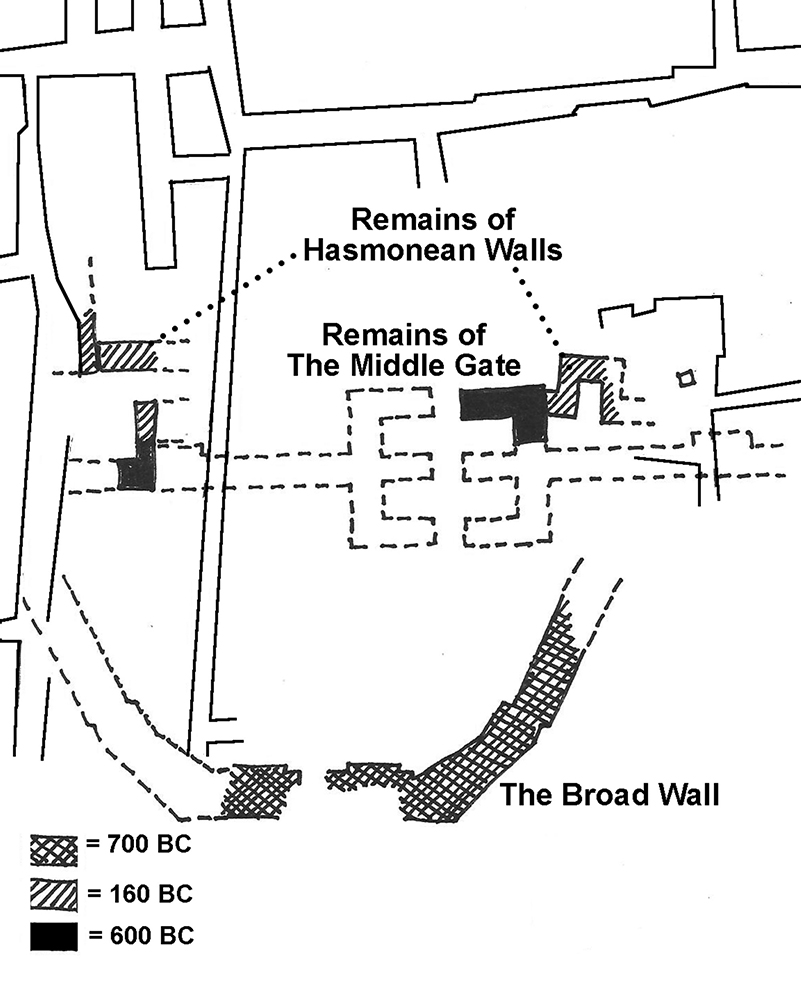
This diagram shows the location of Hasmonean wall remains that are found in the line of the old First Wall. This wall line ran from the Tower of Mariamme to the east, including the portion of the wall in the photos below. It reached the Western Wall of the Temple Mount.
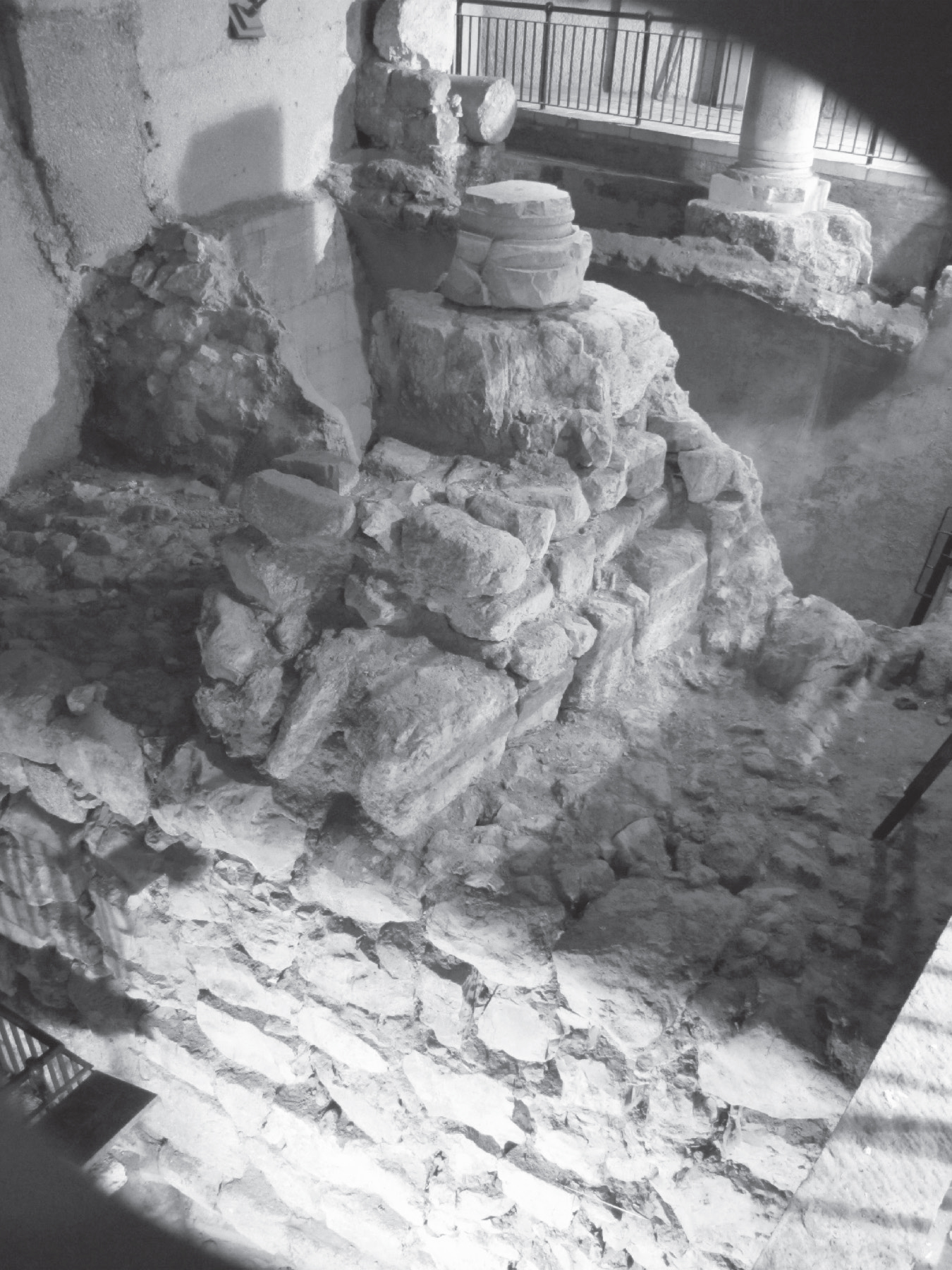
We can see four things in the remains of this wall, which is located in the northern part of the Jewish Quarter: 1) It was part of the gate system that protected the western section of the city on the north wall. The entrance to the city is on the right of this photo; 2) The remains of the wall built by the Hasmoneans around 150 BC can be seen in the stones at the bottom of the photo; 3) To the left and down, the stones form a straight seam which divides the wall into two sections – right and left, or west and east. The left section was the base of a tower that guarded the gate; 4) The column and its base, seen on the top of the wall, are from the Byzantine street called the Roman Cardo from 140 AD. Many of these Roman columns and much of the paved Cardo street can still be seen running through the Jewish Quarter.
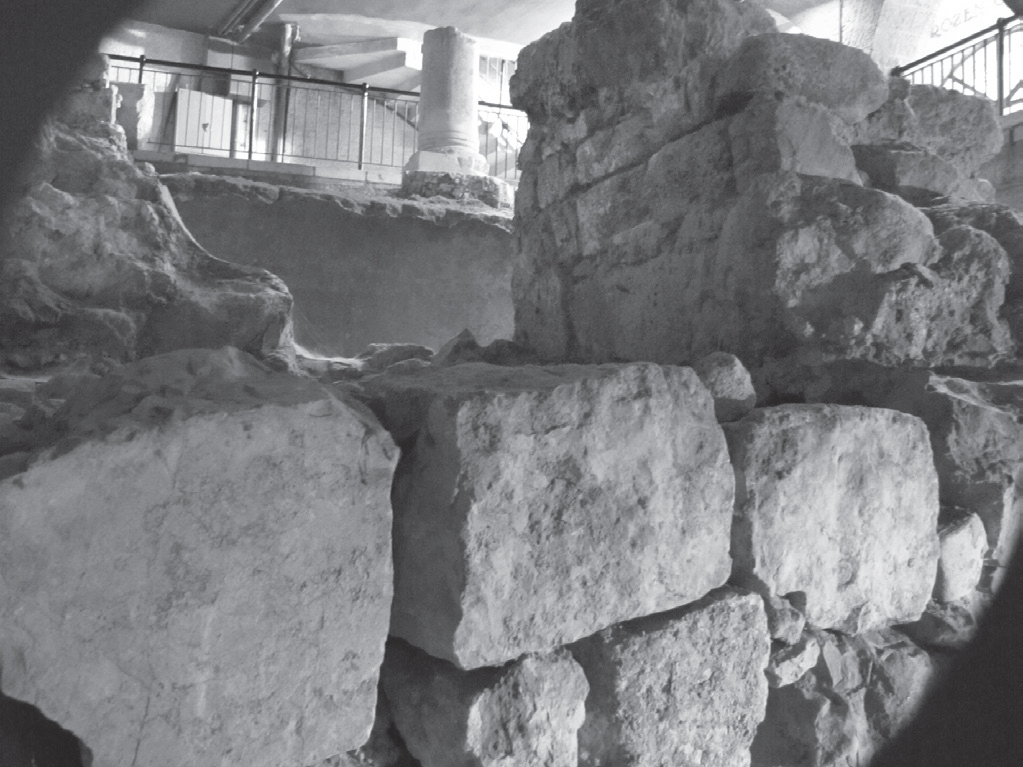
The rocks of the Hasmonean tower to the left (west) of the gate.
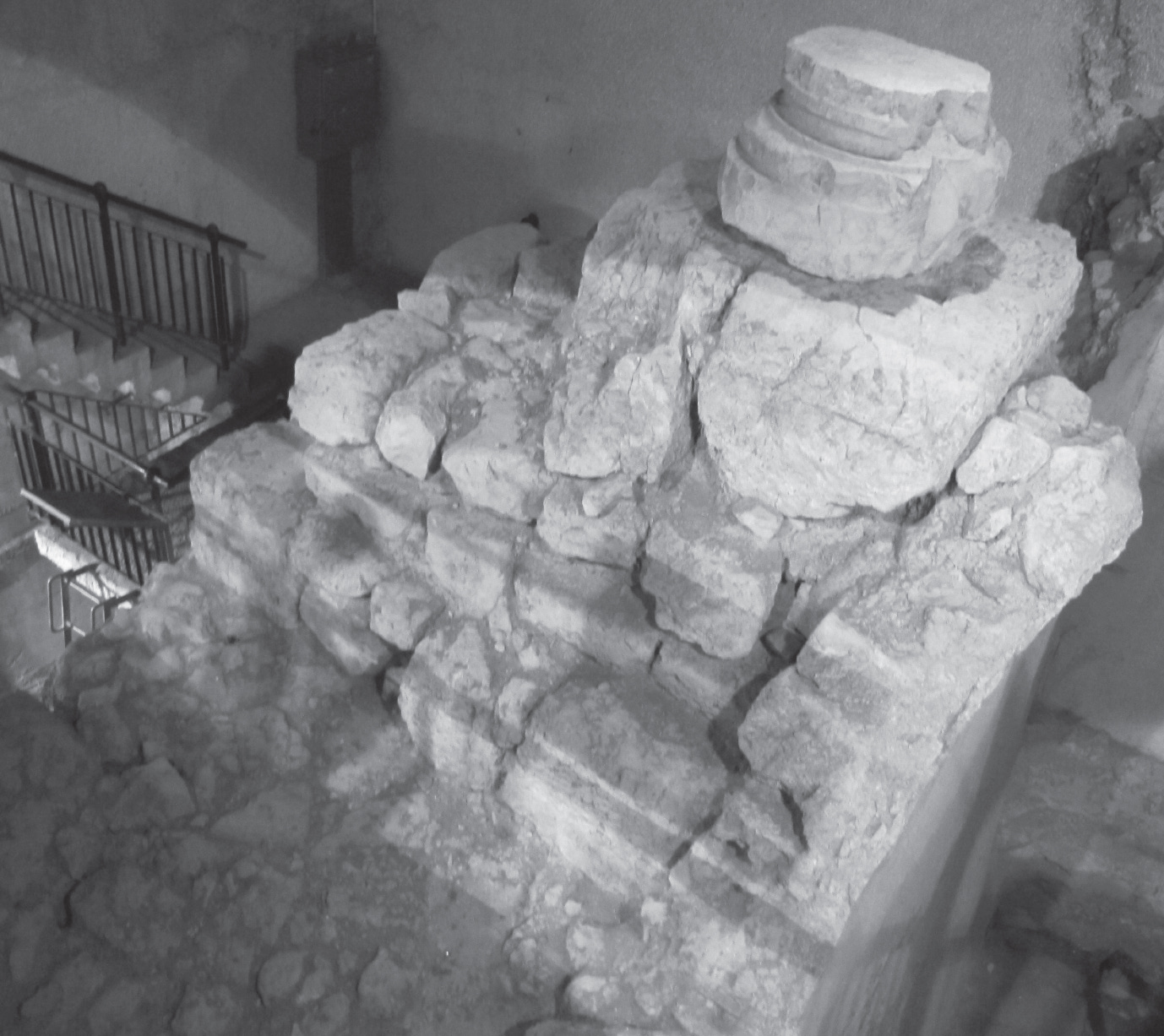
Looking from the top down on this same section of wall. Here we can see the entrance to the city through the opening/gate in the bottom right of the photo, and the Roman Cardo column built over the wall 300 years later.
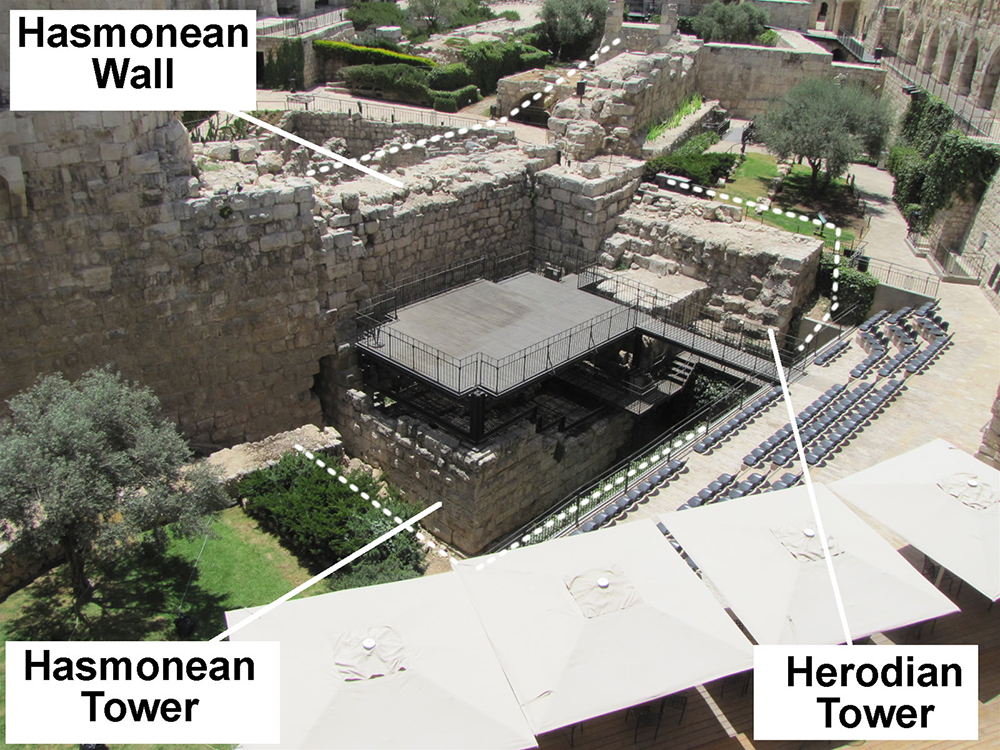
The Hasmonean wall in the Citadel continues south under the present west wall of the city. It continues to arch to the east (left in photo) and its remains can be seen again in the Jewish Quarter today near the Broad Wall in the Cardo (as seen in the photos above).
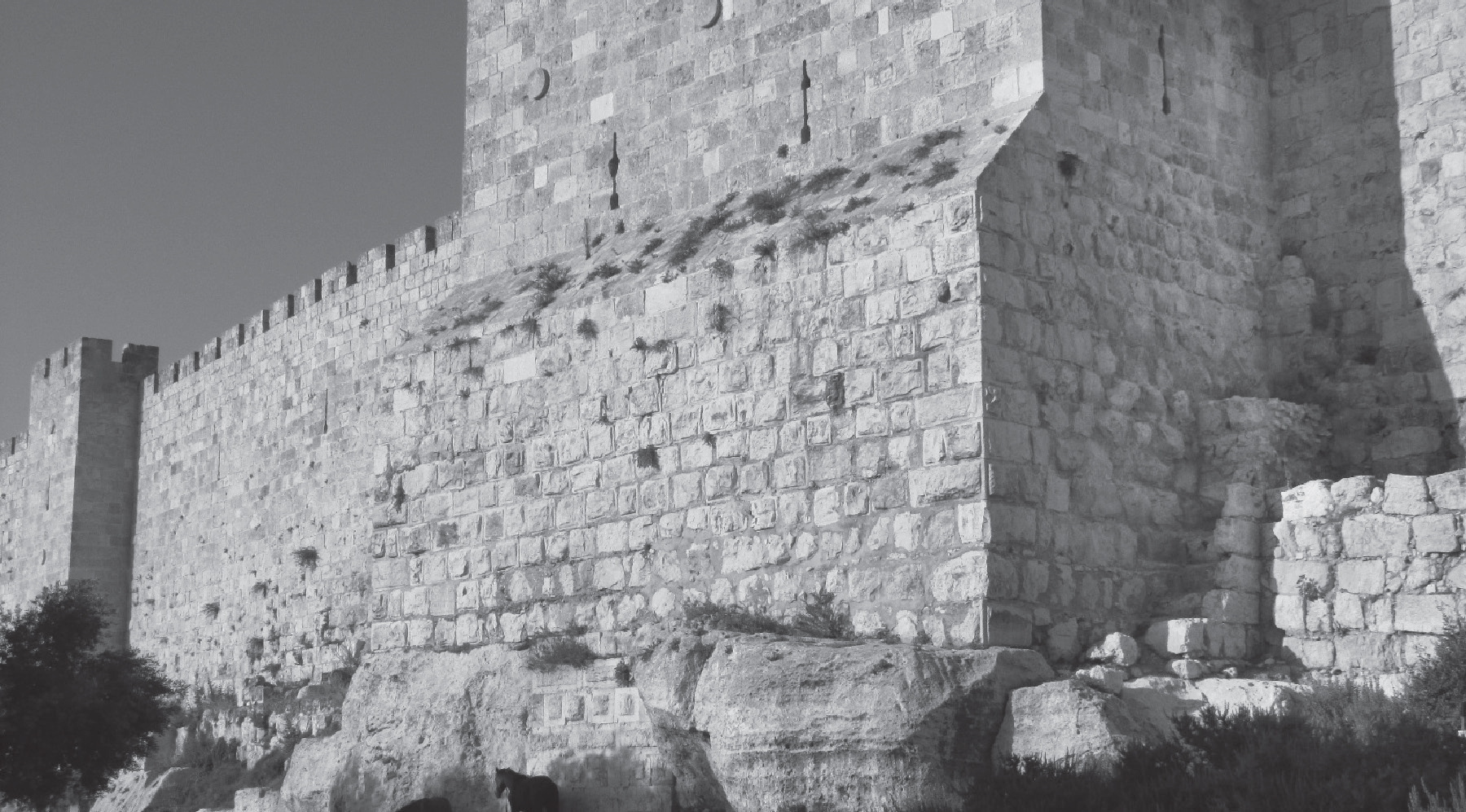
A view of the west city wall of the Old City. The Hasmonean work mentioned in the caption of the Citadel photo above continues south of the Citadel, and is visible in the lower stones of the wall on the right and left sides of the tower. The tower itself was also built by the Hasmoneans and restored by Suleiman in 1535. The Hasmonean stones can be seen in this tower setting on the bedrock to the height of eleven courses of ashlars. The Hasmonean stones have margins cut around the edges and rough boss in the middle of each block. The Hasmoneans carved this same look into the bedrock (seen behind the horse at the bottom middle of the photo) to create an appearance of stone work to match the stones they used to build the tower above.
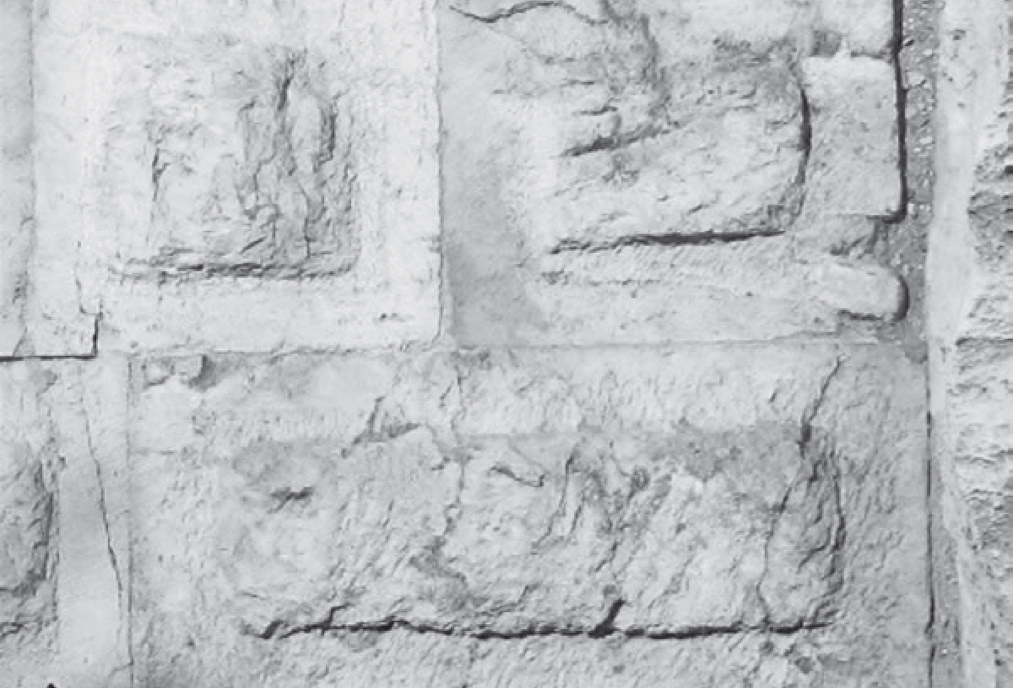
A close-up of the Hasmonean ashlar stones in the west wall of the Old City. Notice the margins cut smooth around the edges and the rough boss in the middle decorating the face of each block.
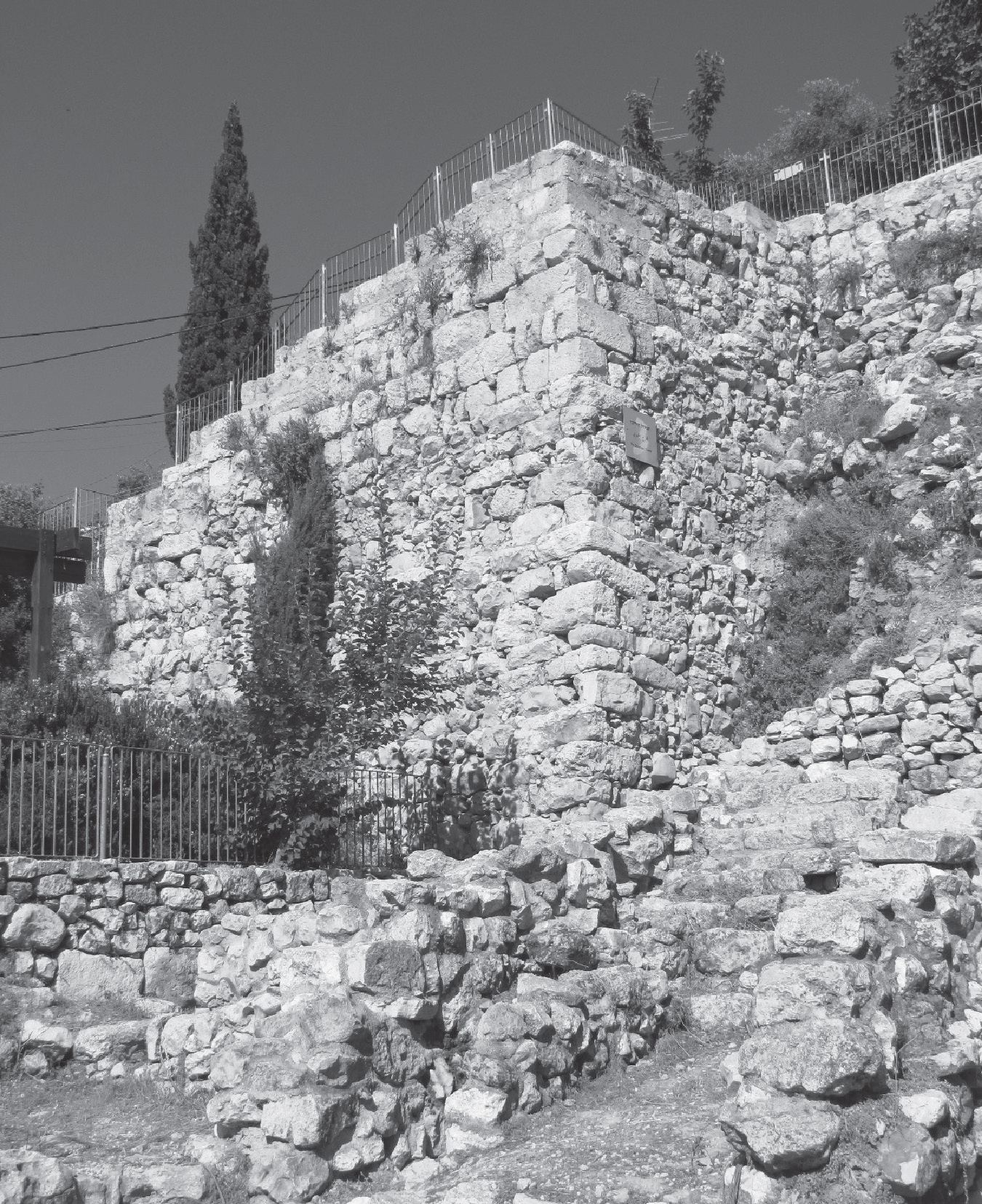
The tall straight wall with the corner is a portion of Nehemiah’s wall from 445 BC that the Hasmoneans re-built around 150 BC on the east side of the City of David. The Stepped Stone Structure is to the right in this photo. Some of the retaining walls from 1200 BC can also be seen in the bottom right of this photo.